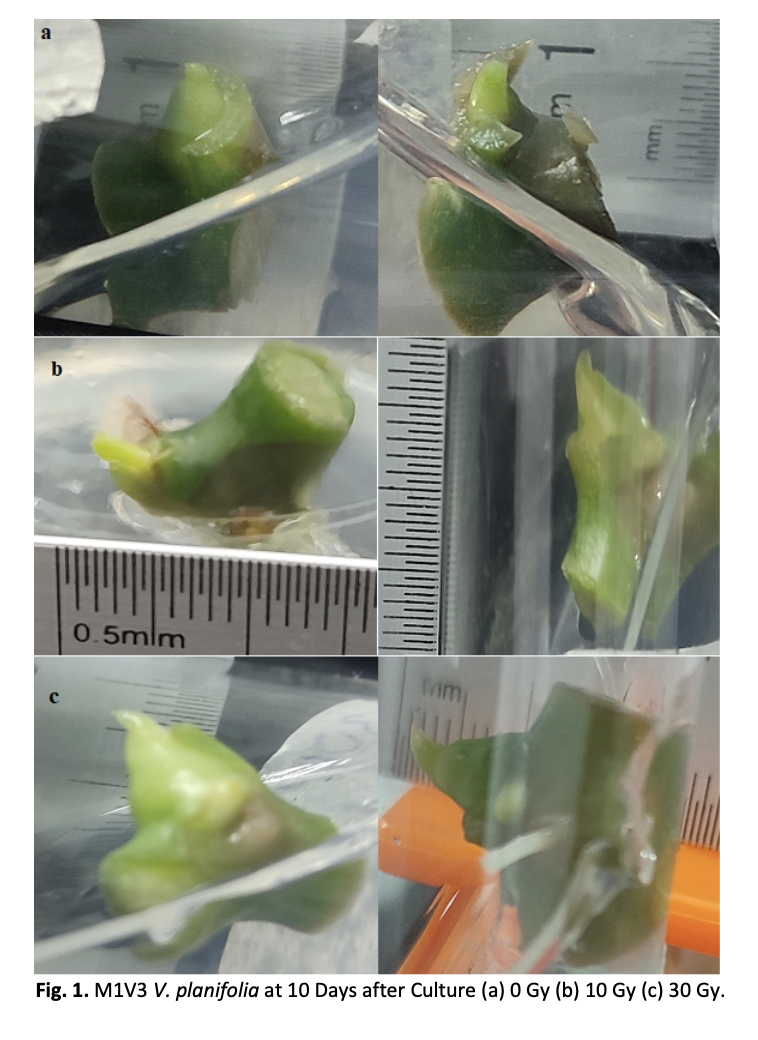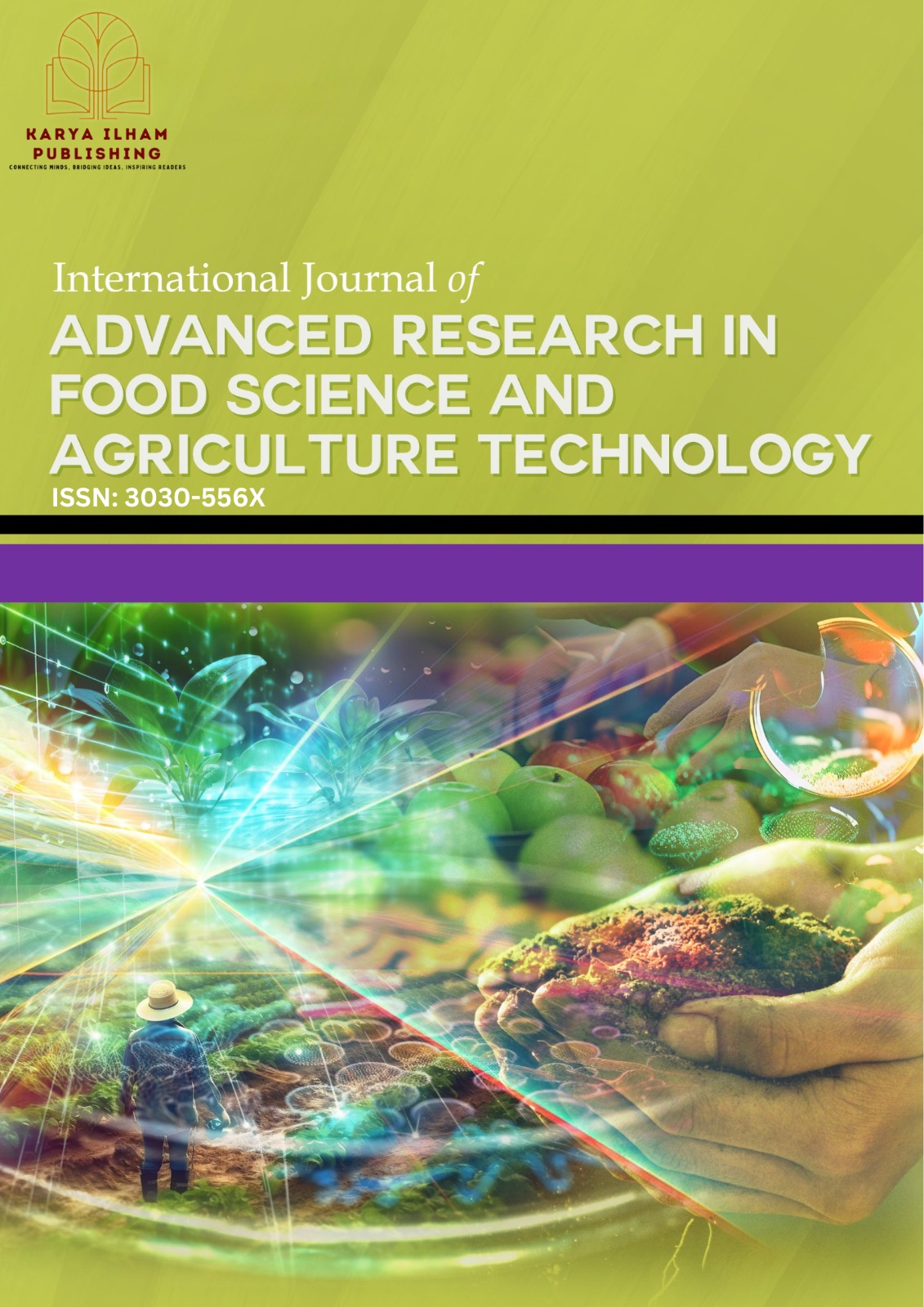Gamma-Irradiated M1V3 Vanilla planifolia Andrews Orchids: Growth Performance of In-Vitro
DOI:
https://doi.org/10.37934/fsat.5.1.8899Keywords:
Third generation, plant tissue culture, mutation breeding, gamma radiation, direct organogenesisAbstract
Vanilla planifolia is a commercially valued crop as it yields the natural vanilla flavour. However, due to its limited genetic diversity, hybrid production is difficult in V. planifolia. A feasible means to improve the V. planifolia genome is using gamma (γ) radiation. The M1V1 (10 Gy; First generation) ex vitro plant has improved increased vanillin concentration (μM) significantly (P<0.05) compared to control (0 Gy) in its leaves. Therefore, the objective of this study was to investigate the effect of γ radiation on the morphology of in vitro-generated M1V3 (mutation 1 in the third vegetative generation) V. planifolia plantlets. Initially, V. planifolia cuttings were exposed to four doses of gamma radiation (10, 30, 40, and 50 Gy) each with five replicates, and propagated ex vitro to generate M1V1 (first generation) and M1V2 (second generation) plants, followed by micropropagation of M1V2 explants. Morphological growth parameters like shoot height, root length, and number of leaves were recorded. There was only a significant difference (p < 0.05) in shoot height among the cultures at 10 days after culture (DAC), after which the height was not significantly different (p > 0.05) amongst the treatments throughout the experiment; 10 Gy was slightly higher. The increase in root per 10 DAC was significantly reduced in 10 Gy, while 30 Gy had the highest but insignificant compared to 0 Gy. Also, leaf number was significantly (p < 0.05) reduced in both 30 Gy and 10 Gy at 100 DAC. Summarily, lower-dose γ radiation has a mild effect on the M1V3 V. planifolia morphology of in vitro plantlets. To our knowledge, this is the first report on in vitro studies of M1V3 V. planifolia.














